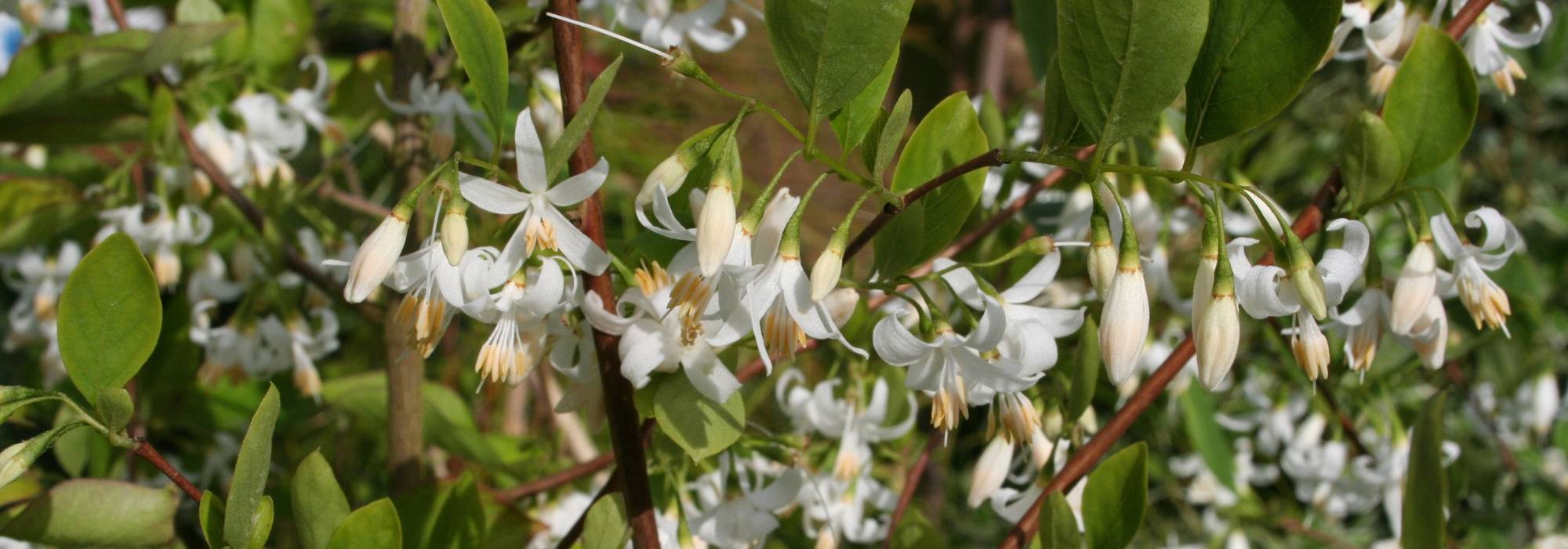
Styrax, Japanese snowbell: planting, growing, care
Contents
Styrax in a nutshell
- Styrax is a bush that offers, in late spring, a delicate, scented flowering of white to slightly pink bell-shaped flowers depending on the varieties
- Its deciduous foliage lights up in spicy colours in autumn
- Known for its aromatic resin called benzoin
- It thrives in humus-bearing, acidic, non-calcareous soils that are moist but well-drained, and in full sun or partial shade
- Hardy to -15°C, it is easy to grow in beds, as a specimen plant and even in a pot on the patio!
A word from our expert
Still too rare in our gardens, Styrax or storax, also known as the tree of silver bells, is a bush essentially known since Antiquity for the aromatic resin called “benzoin” that seeps from its trunk and from which healing balms, perfumes and incense are obtained!
Styrax, however, deserves to be grown more for its remarkable ornamental qualities from spring to autumn. For while Styrax officinalis, Styrax obassia and Styrax japonica (S. japonicus) and its cultivars are valued in ornamental gardens as much for their elegant habit and their delicate spring flowering in small scented white or pink bells as for their foliage coloured from autumn onwards.
You will particularly appreciate the Styrax japonicus and its many cultivars such as ‘Pink Chimes’ with pink flowers, Styrax japonicus ‘Pendula’, a cultivar with a weeping habit, Styrax japonicus ‘Evening Light’ with purple foliage or ‘June Snow’ with a columnar habit.
The slow growth of Styrax makes it a bush well suited to small gardens and to container growing.
Hardy, it prefers rather acidic, cool but well-drained soils, and enjoys non-scorching sun or partial shade. Styrax has only virtues which it displays throughout the seasons, providing an original way to complement your heather soil borders. In the garden, it pairs wonderfully with other heather soil bushes, such as rhododendrons, azaleas and camellias.
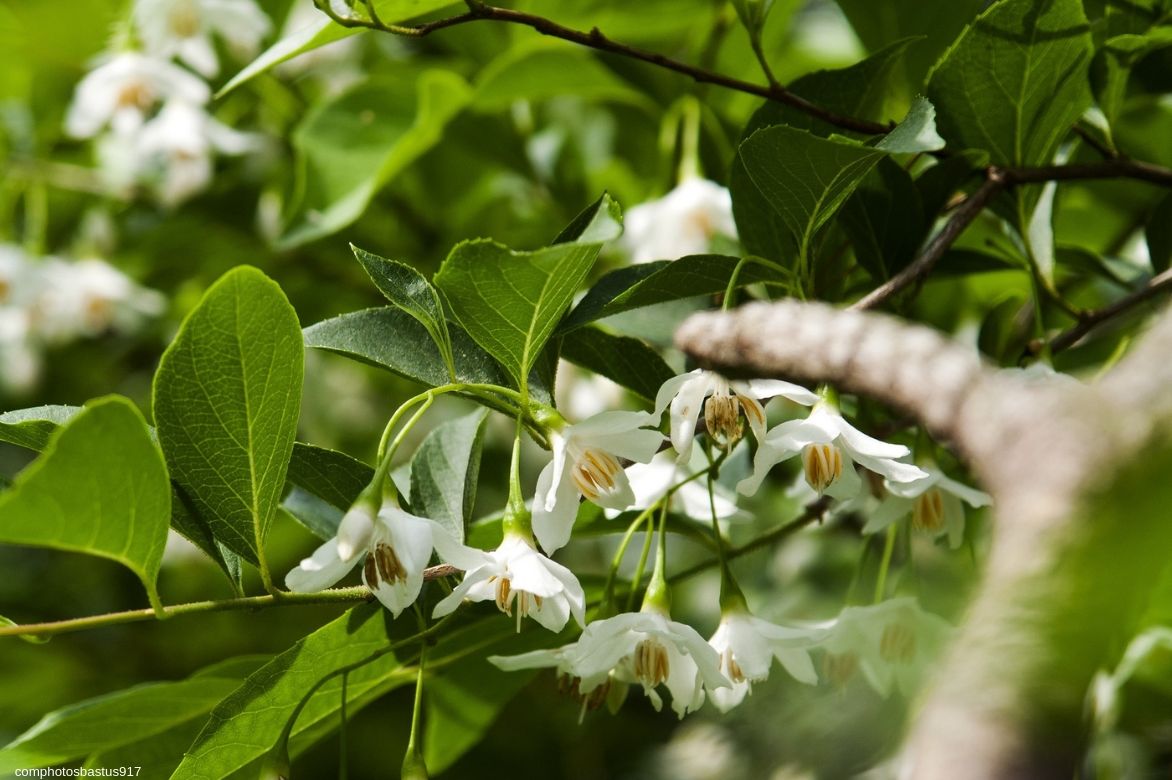
Description and botany
Botanical data
- Latin name Styrax
- Family Styracaceae
- Common name Styrax, Japanese snowbell, silver-bell tree
- Flowering May–June
- Height 1.50 to 8 m
- Sun exposure Sun, partial shade
- Soil type neutral to acidic
- Hardiness -15°C
In the family Styracaceae, Styrax or aliboufier, also called the “silver-bell tree”, is a bush native to light woodland and riverbanks of Asia, notably Japan and China, but also North America and the Mediterranean Basin. The genus Styrax includes more than a hundred species of bushes or small deciduous or evergreen trees. Only three are commonly found in our gardens: Styrax officinalis, which grows naturally in southern France, S. obassia or “large-leaved Styrax”, and Styrax japonicus (S. japonica) or Japanese styrax, together with numerous cultivars such as ‘Fargesii’, ‘Pendula’ and ‘Pink Chimes’.
This bush, with a single or multiple trunk, displays a bushy, upright or rounded habit, often gracefully spreading, sometimes pendulous (Styrax japonica ‘Pendulus’). Some newer cultivars, such as ‘June Snow’, even show a columnar habit. The branches of Styrax, however, most often tend to grow horizontally, giving it a very elegant layered silhouette. Depending on variety, it forms either small trees or large bushes. The smallest styrax will not exceed about 1 to 2 m in height and, being compact, can be planted anywhere, even in a pot. The largest can reasonably reach up to 6–7 m, rarely more in our regions. Styrax has moderately fast growth and remarkable longevity, since it can live for more than 100 years.
The trunk has a fine smooth brown-grey bark that splits with age.
Styrax develops magnificent foliage from spring to autumn. Its deciduous, alternate leaves are elliptical, ovate or obovate and pointed, with a strongly marked central vein and sometimes finely dentate margins. Large-leaved Styrax (Styrax obassia) is distinguished by large almost round leaves that end abruptly in a point. Leaves, pale green to olive-green and slightly glossy above and downy beneath in spring, turn yellow or orange-red in autumn, extending the shrub’s ornamental interest. Some cultivars display dark purplish foliage, such as Styrax japonica ‘Evening Light’.
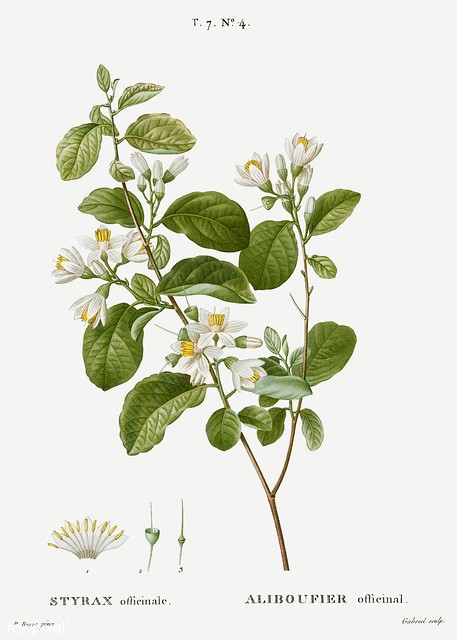
Styrax officinalis – botanical illustration by Pierre-Joseph Redouté
Leaves measure from 3 to 20 cm long and stand upright, contrasting with the shrub’s luminous flowering.
In early summer, from May to June, the bush produces a dense, delicate flowering best admired from below! It is clothed in an abundance of small, pendulous, fragrant bell-shaped flowers, grouped in small clusters of three to six at the tips of the year’s shoots. Their corolla, about 1 to 2 cm wide, is formed of five petals most often pure white, sometimes tinged with pink, from which a cluster of stamens with golden-yellow anthers emerges. They recall the flowering of Halesia carolina. Styrax japonica ‘Pink Chimes’ is one of the few varieties to produce pink flowers.
These campanulate bells are melliferous and give off an intense, slightly sweet, vanilla-like fragrance, much prized in perfumery and incense-making.
By mid-summer they give way to small pruinose fruits, ovoid fleshy drupes of a whitish-green colour containing a brown seed.
Perfectly hardy, Styrax can withstand temperatures around -15°C, sometimes lower, and adapts to all regions, provided it is given a sheltered position away from cold winds to protect flower buds from late frosts.
Easy to cultivate, Styrax thrives in partial shade or in sun in a well-drained soil, preferably acidic, rich and humus-bearing. It adapts perfectly to any good garden soil provided it is fresh, only slightly calcareous and well drained.
Its compact yet elegant silhouette and rather slow growth make Styrax a bush suitable for all natural-style gardens, even small spaces, creating attractive focal points.
It can be grown alone as a specimen at the centre or rear of a border or glade, or in groups, in a mixed hedge together with ericaceous bushes. Some modestly growing varieties are well suited to container culture on a terrace or near entrances.
Styrax resin, known as “benzoin“, has been known since Antiquity for its fragrant and medicinal properties, notably antiseptic, antispasmodic and wound-healing. This aromatic substance is also used in the composition of famous incenses and perfumes. Benzoin is also an ingredient in the manufacture of Armenian paper.
Read also
Plant young ericaceous plantsMain species and varieties
Of the roughly hundred species in the genus, Styrax officinalis, S. obassia and Styrax japonicus or S. japonica, which occurs in many dwarf, weeping or pink-flowering cultivars, are the species most commonly cultivated.
Our favourites
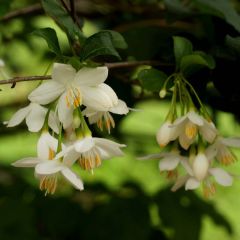
Styrax japonica
- Flowering time July, August
- Height at maturity 4 m
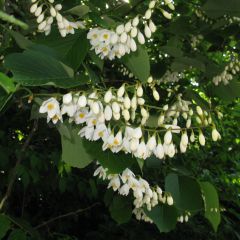
Styrax obassia
- Flowering time June, July
- Height at maturity 6,50 m
Discover other Styrax
View all →Available in 2 sizes
Available in 2 sizes
Available in 2 sizes
Available in 1 sizes
Available in 1 sizes
Available in 1 sizes
Available in 1 sizes
Available in 1 sizes
Available in 1 sizes
Available in 1 sizes
Planting Styrax
Where to plant Styrax or silver-bell tree?
Hardiness being good, Styrax is able to withstand without problem temperatures from -15 °C to -20 °C and acclimatises throughout France, except perhaps in Mediterranean climate, which is a little too hot and dry in summer.
Avoid exposing it to drying, icy winds that can scorch foliage and damage its flowers, sensitive to late frosts. Plant in a sheltered position in sun, if sun is not too scorching, or in partial shade. It can tolerate full sun except during hottest hours of day. If you live in Mediterranean region, therefore prefer a shaded situation.
Easy to grow, Styrax thrives in any good fresh, well-drained garden soil, preferably non-calcareous, even slightly acidic. In all cases, it is preferable to add a little heather soil at planting.
This bush generally becomes as wide as it is tall: allow a generous, open space.
Plant in a clump, in an informal hedge or as a specimen, it also makes lovely centres for mixed borders. Smaller varieties of Styrax are suitable for container growing on terrace to enjoy its delicate fragrance; this is also a good solution if soil is too calcareous.
When to plant Styrax or aliboufier?
Planting Styrax is preferably done in autumn from September to October, to encourage rooting before winter. Spring planting is also possible once any risk of frost is removed.
How to plant Styrax?
In open ground
For successful planting of your Styrax, also consult our advice sheet: Plant heather soil bushes WHERE AND HOW?
- Dig a hole about twice the size of the root ball
- Add to garden soil some well-rotted compost, one third heather soil and one third coarse sand
- Place the bush, stake, then backfill the hole and firm gently
- Water thoroughly and mulch soil with pine bark to keep it cool in summer
- Continue to water regularly for first three years
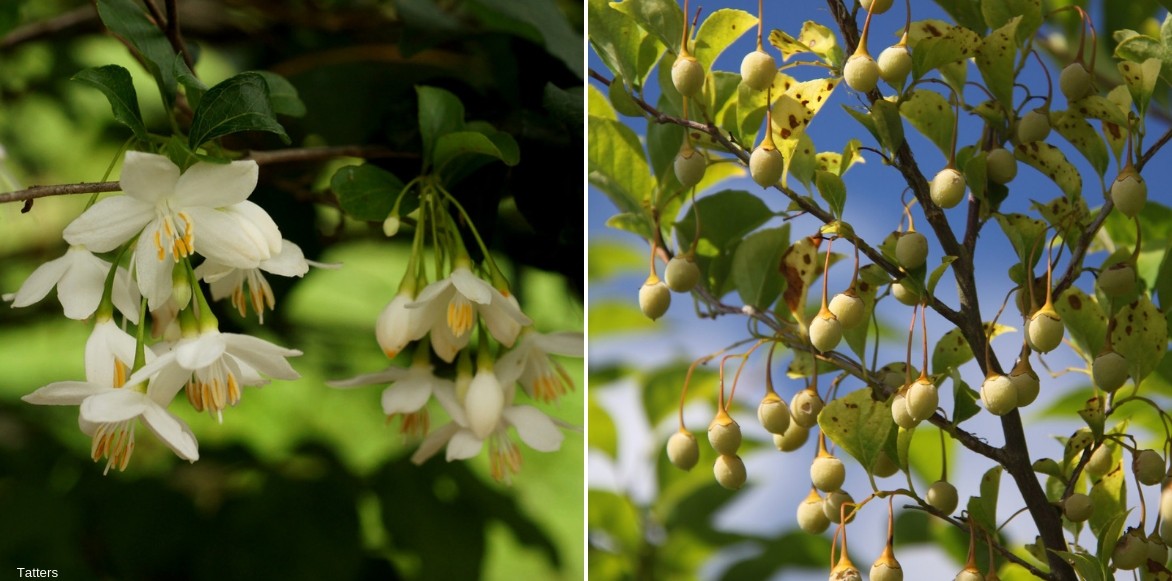
Styrax japonica : flowers and fruits
In containers
You can also plant Styrax in a pot: choose the most compact varieties. Plant in a mixture of potting compost, sand and heather soil. Potted Styrax will require more regular watering than in open ground.
Maintenance, pruning and care
Styrax is an easy-to-maintain bush. For first three years after planting, and especially during dry spells, monitor its water needs by watering regularly as soon as soil dries out at surface. Soil should remain cool: it is preferable to mulch around base every spring to retain moisture.
Styrax prefers humus-bearing soil, which is why we recommend adding a little well-rotted compost each spring by forking into soil at base of trunk.
If you live in a cold region, don’t hesitate to cover it with a winter fleece to protect young shoots from frost.
Pruning is not essential, except to rebalance branches or remove crossed or poorly placed branches, or to remove dead wood. It should be carried out in February–March, before growth resumes.
Styrax has no pests or diseases.
Propagation
Sowing Styrax seeds is possible but this delicate technique should be reserved for experienced, patient enthusiasts, especially since a double stratification of seeds is necessary. Prefer propagation by cuttings in August–September, once flowering has finished, on semi-ripe shoots.
- Take cuttings 10 to 20 cm long that are still tender
- Remove leaves from the lower part of stems
- Plant them in pots with potting compost mixed with sand
- Keep moist by watering regularly
- Overwinter them frost-free
- Plant out in ground the following autumn
Pairing Styrax in the garden
Styrax or Silver Bell Tree is a bush offering two seasons of ornamental interest: in early summer when it is covered in white flowering and in autumn when its leaves turn coppery orange and golden yellow.
With its elegant silhouette, it creates pretty focal points in natural, white and romantic gardens. Its delicate white bells will stand out admirably against the evergreen foliage of campanulate Andromedas, Forsythias, Leucothoe and Viburnums.
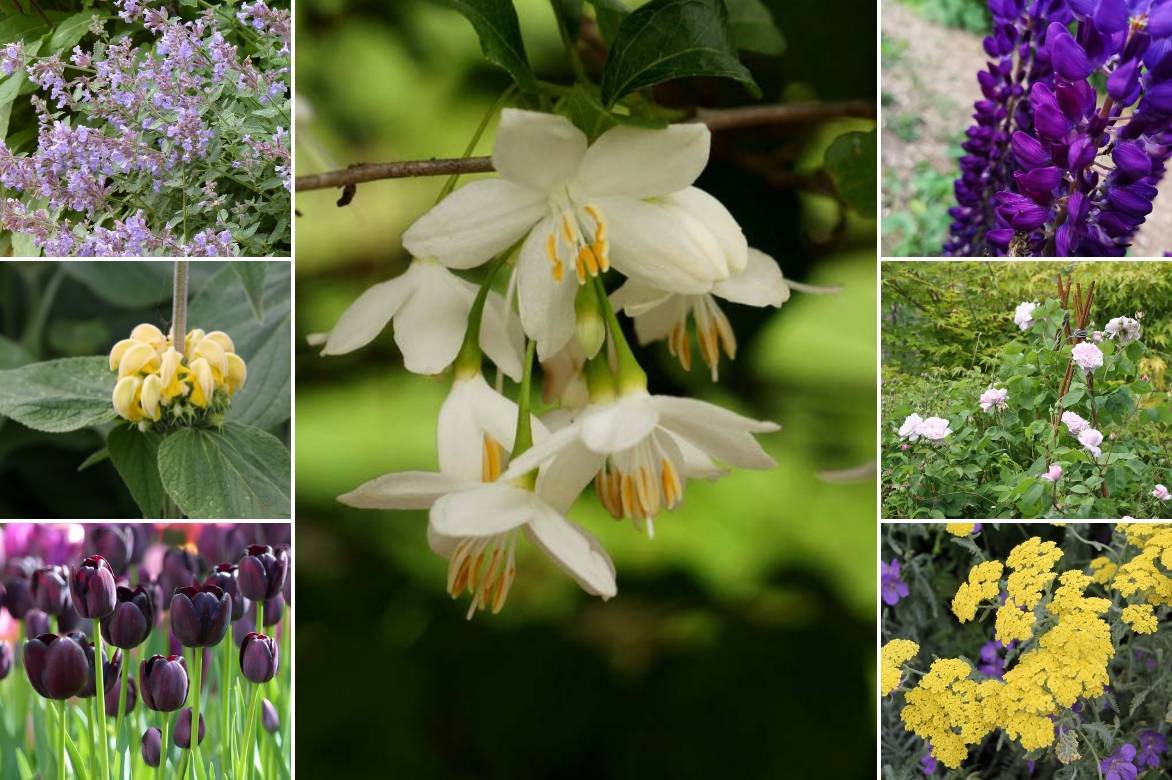
A planting idea: Styrax japonica, Nepeta faassenii, Phlomis russeliana, Tulip ‘Queen of the Night’, Lupin ‘Gallery Blue’, Rose ‘Fantin Latour’ and Achillea ‘Moonshine’
In a grove, pair it with Halesias, Hamamelis, Magnolias, Mahonias and Fothergillas. In a cool, romantic border, surround its trunk with semi-shade perennials such as epimediums, Phlox divaricata, Melittis, hardy geraniums, Tiarellas, Solomon’s seals, peonies or Dicentra, which will accompany its white flowering.
For a white/silver scheme, plant it near the greyed foliage of Hostas and Brunneras.
This bush, liking acidic soils, is easily associated with ericaceous plants such as Camellias, Azaleas, Rhododendrons, Kalmias, Skimmias, Japanese Andromedas, Sarcococcas or Daphnes. Plant some heathers alongside them.
It will have a most attractive effect alongside shrubs with autumn colour such as the Caramel tree, Acer or Cornus, with which it will be in perfect tonal harmony.
Useful resources
- Discover our selection of Styrax
- Most beautiful heather soil bushes are in our nursery, discover them!
- Subscribe!
- Contents
![Styrax: Everything You Need to Know
The Styrax, or [glossary term="snowbell"], is a captivating addition to any garden, offering a blend of ornamental beauty and serene charm. This article delves into the essential aspects of Styrax, from its botanical characteristics to its care requirements, ensuring you can cultivate this enchanting plant successfully.
### Botanical Profile
The Styrax genus encompasses a variety of species, each known for its distinctive, pendulous white flowers that resemble delicate bells. These plants are generally medium-sized trees or shrubs, making them perfect for residential gardens where space might be limited.
### Ideal Growing Conditions
Styrax thrives in well-drained, fertile soil, preferably with a neutral to slightly acidic pH. It favours a position that receives partial shade, as too much direct sunlight can harm its foliage and flowers. Consistent moisture is key, especially during the growing season, but be wary of waterlogging.
### Planting and Care
Plant your Styrax during the dormant season, from late autumn to early spring. This timing allows the plant to establish its root system before the onset of growth in spring. Mulching around the base with organic material will help retain soil moisture and suppress weeds.
Regular pruning is not necessary for Styrax, but you may trim any wayward or broken branches to maintain its shape and health. Fertilise in early spring with a balanced, slow-release fertiliser to support flowering and growth.
### Common Challenges
Styrax is relatively disease-free, but it can occasionally suffer from leaf spot or blight. These can be managed by ensuring good air circulation around the plant and by cleaning up fallen debris to prevent fungal spores from overwintering.
### Landscape Uses
With its graceful form and stunning floral display, Styrax is an excellent choice for focal points in landscape designs. It pairs beautifully with rhododendrons and azaleas, creating a layered, textured garden aesthetic. Additionally, its modest size makes it suitable for smaller gardens or as a feature plant in larger landscapes.
In conclusion, the Styrax offers beauty and tranquility with minimal maintenance, making it a prized specimen in any garden. By following the guidelines outlined above, you can enjoy the full splendour of this delightful genus in your own outdoor space. aliboufier_plant and maintain](https://www.promessedefleurs.ie/blogwp/wp-content/uploads/2019/05/styrax-tout-savoir.jpg)
































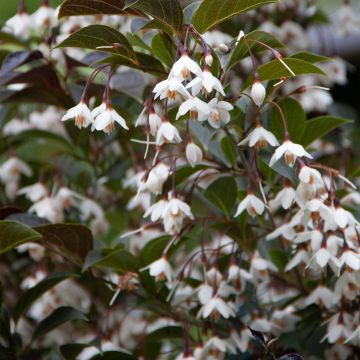

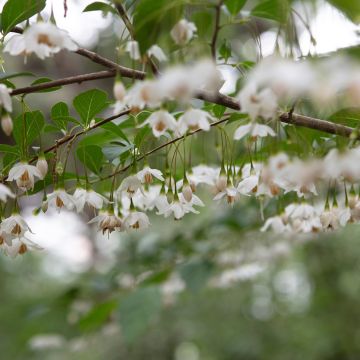
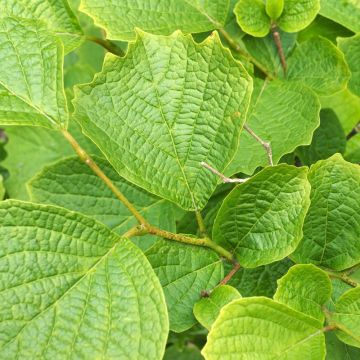
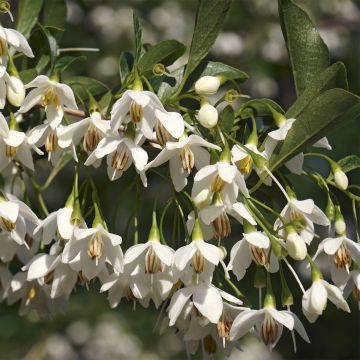
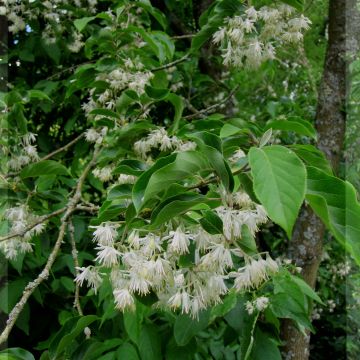
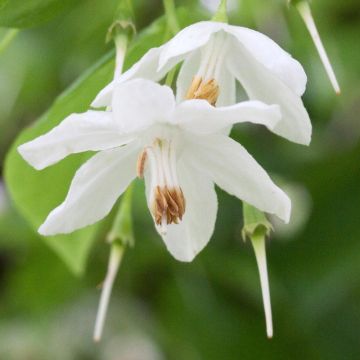
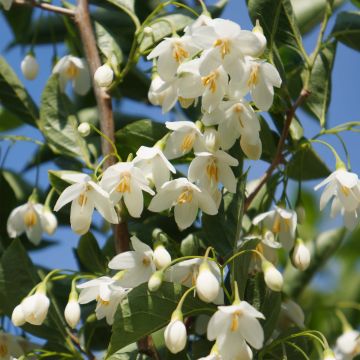
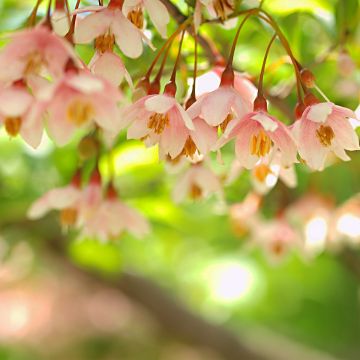
Comments